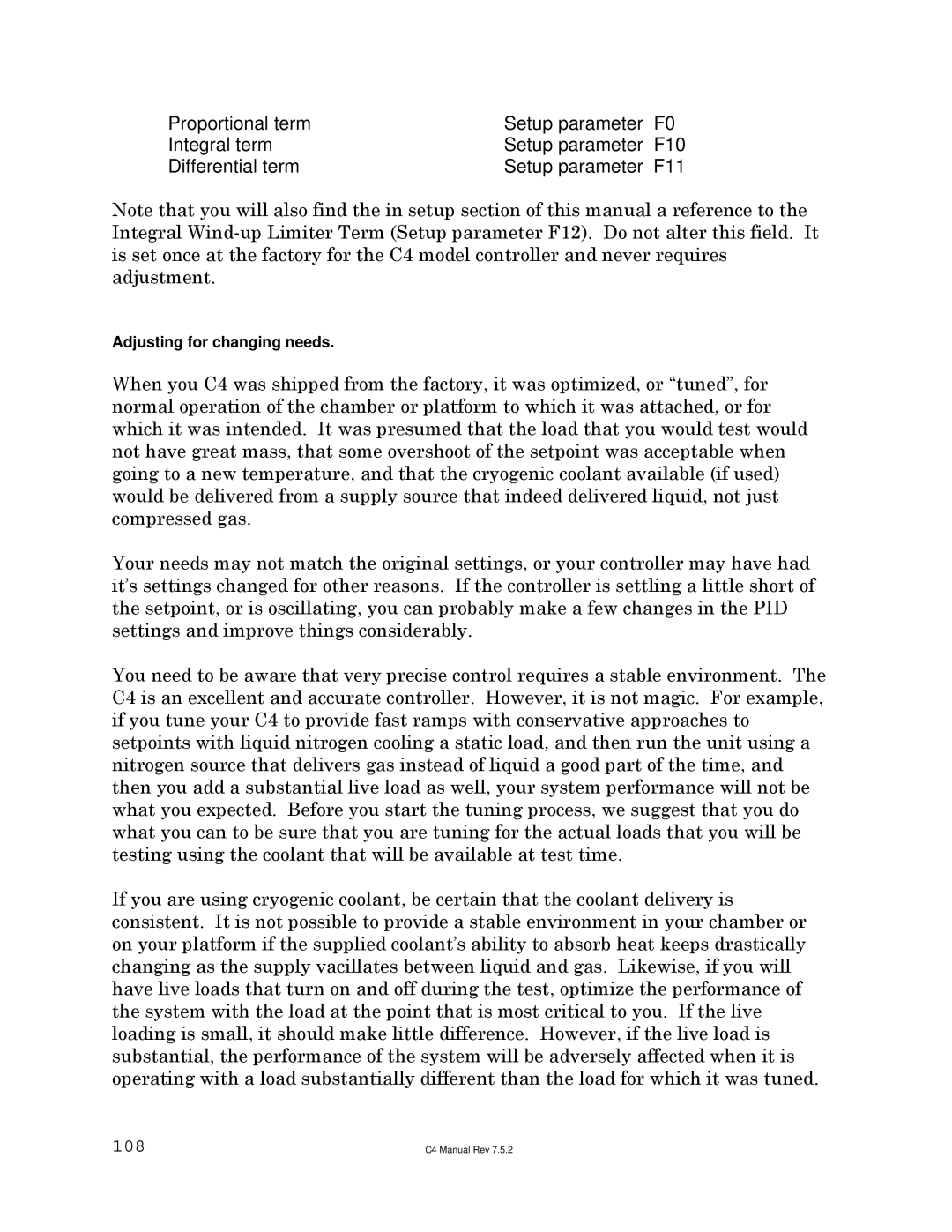Proportional term | Setup parameter | F0 |
Integral term | Setup parameter | F10 |
Differential term | Setup parameter | F11 |
Note that you will also find the in setup section of this manual a reference to the Integral
Adjusting for changing needs.
When you C4 was shipped from the factory, it was optimized, or “tuned”, for normal operation of the chamber or platform to which it was attached, or for which it was intended. It was presumed that the load that you would test would not have great mass, that some overshoot of the setpoint was acceptable when going to a new temperature, and that the cryogenic coolant available (if used) would be delivered from a supply source that indeed delivered liquid, not just compressed gas.
Your needs may not match the original settings, or your controller may have had it’s settings changed for other reasons. If the controller is settling a little short of the setpoint, or is oscillating, you can probably make a few changes in the PID settings and improve things considerably.
You need to be aware that very precise control requires a stable environment. The C4 is an excellent and accurate controller. However, it is not magic. For example, if you tune your C4 to provide fast ramps with conservative approaches to setpoints with liquid nitrogen cooling a static load, and then run the unit using a nitrogen source that delivers gas instead of liquid a good part of the time, and then you add a substantial live load as well, your system performance will not be what you expected. Before you start the tuning process, we suggest that you do what you can to be sure that you are tuning for the actual loads that you will be testing using the coolant that will be available at test time.
If you are using cryogenic coolant, be certain that the coolant delivery is consistent. It is not possible to provide a stable environment in your chamber or on your platform if the supplied coolant’s ability to absorb heat keeps drastically changing as the supply vacillates between liquid and gas. Likewise, if you will have live loads that turn on and off during the test, optimize the performance of the system with the load at the point that is most critical to you. If the live loading is small, it should make little difference. However, if the live load is substantial, the performance of the system will be adversely affected when it is operating with a load substantially different than the load for which it was tuned.
108 | C4 Manual Rev 7.5.2 |
